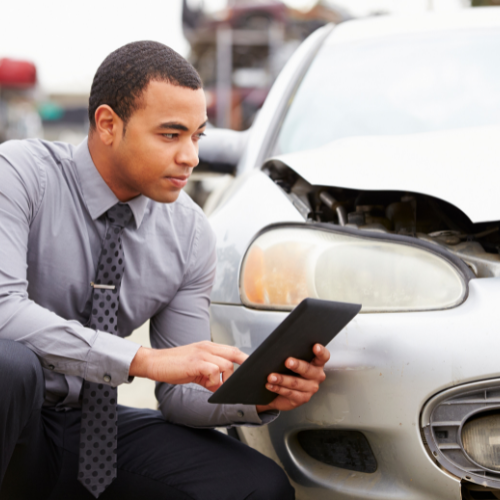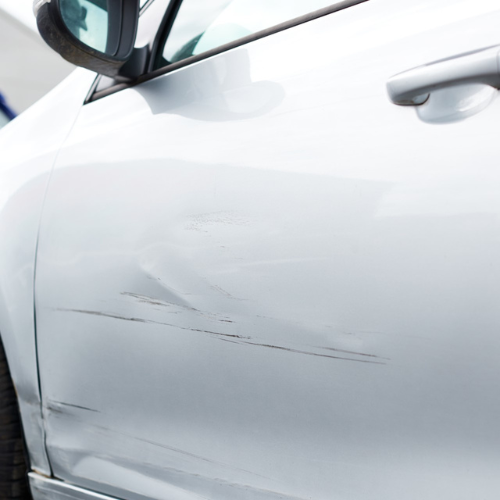_1689092672.jpg)
Diving into the world of car leasing in the UK? Beware the pitfalls of the return process – many are caught unaware, facing unexpected challenges at the finish line.
A recent study by Lease Fetcher found that 1 in 4 lease car drivers in the UK are unaware of the condition their car needs to be in when they return it at the end of the lease. This lack of knowledge can make the whole leasing process quite daunting.
In this article, we will discuss the importance of returning your leased car as a significant milestone in your leasing journey. It is crucial to understand the steps involved and the requirements for a successful return. Here, we will guide you through the entire process, from organising the collection to addressing any potential damages or charges. All of this advice is based on the guidelines provided by the BVRLA (British Vehicle Rental and Leasing Association) regarding fair wear and tear.

Before your lease vehicle is collected, it's essential to make the necessary arrangements. Here's what you need to do:
10-12 Weeks before the return, it is important to appraise the vehicle objectively against the BVRLA Fair Wear and Tear Standard. Take a note of any existing damages, wear, or issues that may affect its condition. All of the leasing companies have a standard expected condition for return (that is aligned with the BVRLA guidelines). Just like us, most of the leasing companies have a standard documentation or procedures that are required for assessing the vehicle condition. So it is better to ask the leasing company before accessing.
Contact your leasing company (assuming that we are not your leasing company) to arrange a convenient date and time for the collection of your vehicle. You have to make it sure that you give at least 7 and 10 working days to collect the vehicle. Also this has to be before your vehicle contracts end so it’s advisable to schedule the collection at least 2 weeks before the contracts end. Also, you can arranges up to 30 days of your required date.
Prepare all relevant documents, such as your lease agreement, registration papers, and maintenance records. Having these ready will expedite the return process.
Few days before the collection, it is better to clean the car inside and out. If you are among those people who haven’t washed the car before so it is advisable that do this from a professional car wash service however if you are a petrol head and have all the necessary carwash equipment then wash it yourself for the last time with all the love and care that you have been managing it for years.
It is advisable to perform this practice halfway through the term lease. Our leasing expert suggests:

"It is advisable to perform this practice halfway through the term lease. It is recommended to assess the mileage of the vehicle at this point, and if you anticipate exceeding the agreed-upon mileage, it is advisable to request a modification."

During the vehicle inspection, the leasing company will assess the condition of the car. Here's what you can expect:
Exterior inspection
Depending on the leasing agreement and the condition of the vehicle, there may be charges associated with the return. Here are some factors to consider:
According to BVRLA Significant damage beyond normal wear may result in additional charges. This can include extensive scratches, dents, or mechanical issues caused by negligence. One of the thing is to be considered that corrosion and scuffing also comes under the excessive wear and tear and the manufacturers can implement an extra charge for it. Therefore it is highly recommended that to take an extra care for your wheels and alloys.
If you exceed the predetermined mileage limit stated in your lease agreement, there may be charges per mile/kilometre over the limit. It is also a best practice to access the milleage
As mentioned above one of the thing to consider that missing or incomplete service can costs anywhere from 50 pounds to 80 pounds depending on the contract, manufacturer and the vehicle. This condition is valid for both if you have manufacturer maintenance or the independent one.
If your leased car has suffered damage, it's essential to address it properly before the return. Here are some steps to consider:
The size of the repairing components contribute to the cost as well, small components of the car including front bumper, spoiler, tail gate spoiler, roof spoiler, rear bumper, spoiler tends to cost as well. The technology of repair also impacts the costs for instance if smart repair technology is used to fix components its tends to cost less.

As your car lease comes to an end, you may have several questions about the return process. Let's address some common queries:
Returning your leased vehicle doesn't have to be a daunting experience. By understanding the process, organizing the collection, and taking care of any necessary repairs, you can ensure a smooth and hassle-free return. Remember to clean your car thoroughly, fix minor damages, and keep up with maintenance throughout the lease period. By following these guidelines, you'll be well-prepared to return your leased car and avoid any unexpected charges.
Our leasing expert and team leader Josh Holt shares the following tip when returning the leased vehicle:

"Arrange repairs, areas of damage, missing equipment before the vehicle is returned, as this will be cheaper than the fees from the lender. It is imperative this is done to a professional standard."
For more information about the leasing process you can have a look at our leasing guide.